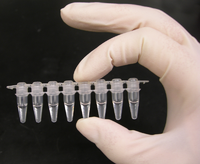
Photo from wikipedia
Influenza viruses are severe human pathogens that pose persistent threat to public health. Each year more people die of influenza virus infection than that of breast cancer. Due to the… Click to show full abstract
Influenza viruses are severe human pathogens that pose persistent threat to public health. Each year more people die of influenza virus infection than that of breast cancer. Due to the limited efficacy associated with current influenza vaccines, as well as emerging drug resistance from small molecule antiviral drugs, there is a clear need to develop new antivirals with novel mechanisms of action. The influenza virus polymerase complex has become a promising target for the development of the next-generation of antivirals for several reasons. Firstly, the influenza virus polymerase, which forms a heterotrimeric complex that consists of PA, PB1, and PB2 subunits, is highly conserved. Secondly, both individual polymerase subunit (PA, PB1, and PB2) and inter-subunit interactions (PA-PB1, PB1-PB2) represent promising drug targets. Lastly, growing insight into the structure and function of the polymerase complex has spearheaded the structure-guided design of new polymerase inhibitors. In this review, we highlight recent progress in drug discovery and assay development targeting the influenza virus polymerase complex and discuss their therapeutic potentials.
Journal Title: Current medicinal chemistry
Year Published: 2018
Link to full text (if available)
Share on Social Media: Sign Up to like & get
recommendations!